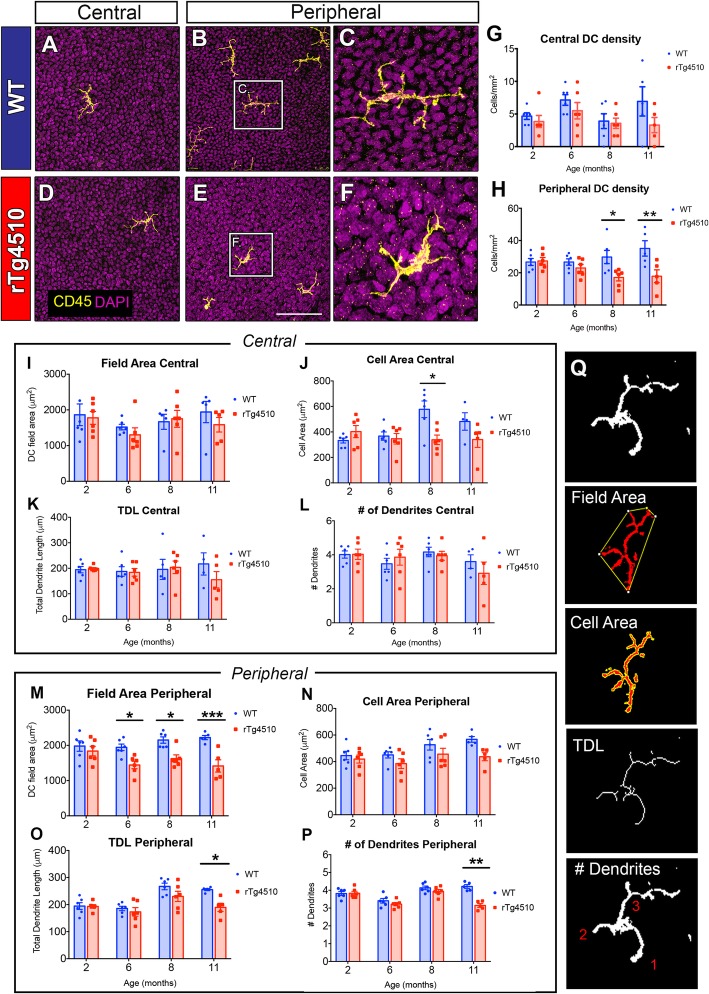Fig. 3.
Dendritic cells in the central and peripheral corneal epithelium of WT and rTg4510 mice at 2, 6, 8, and 11 months. a–f Representative images of CD45+ DCs show higher abundance in the peripheral versus central cornea for both genotypes, with few DCs across the peripheral area in rTg4510 mice at 11 months (d–f). c, f In rTg4510 mice, CD45+ DCs had an altered, amoeboid morphology compared to WT at 11 months. g The central cornea showed no significant inter-group differences at any age (P > 0.05). h Substantial differences were observed in the peripheral cornea, whereby there was a significantly lower DC density in rTg4510 mice compared to WT mice, at both 8 and 11 months (P < 0.05). i–p DCs were analyzed for field area, cell area, total dendrite length (TDL), and number of dendrites per cell. There was no genotype difference in the central cornea except for a larger cell area in the 8-month-old WT mice compared to rTg4510 mice (j, P < 0.05). m–p In the peripheral cornea, DC field areas were significantly smaller in rTg4510 mice compared to WT, at 6, 8, and 11 months of age (m, P < 0.05). Cell area analysis shows no significant genotype difference (n). TDL and number of dendrites per cell were less in the 11-month-old rTg4510 mice compared to WT (o, p; P < 0.05). q Morphometric methods for field area, cell area, TDL, and number of dendrites per cell. Scale bars represent 100 μm. Date are shown as mean ± SEM, where * indicates P ≤ 0.05, **P ≤ 0.01, ***P ≤ 0.001 as determined using the two-way ANOVA and Tukey’s multiple comparisons

